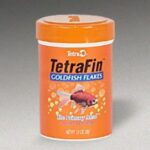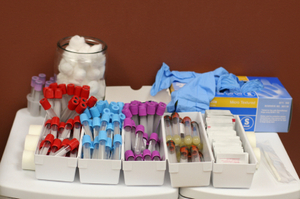Turtles, after goldfish, are one of the world’s most often neglected pets. Because they’re so inexpensive and easy to purchase, many people place little value on their care. Nearly everyone has a story about the demise of their childhood pet turtle. The market has tightened up a little, and it’s no longer as common as it used to be to see hatchlings for sale at flea markets and street festivals, though this is more due to concerns about salmonella, and laws surrounding legal sale size than anything else. Don’t be one of the many who kill their turtles through neglect or lack of education. Ultimately, turtles are not that difficult to care for, provided you’ve done your research. These tips will help you to keep you turtle as healthy and happy as possible, and ensure that it will be with you for many years to come.
The majority of turtles in the pet trade are aquatic turtles, and this article applies to them. Advances in care and breeding practices for several species of tortoise and land turtle in recent years means that these terrestrial species are becoming a relatively common sight in local pet shops. One of the most disastrous mistakes you can make in turtle care is confusing your terrestrial turtle for an aquatic species – this really does happen is disturbing regularity. Know the species that you are dealing with – terrestrial turtles do not swim well, and will drown if placed in an aquarium full of water.
1) UVB Light – unlike snakes, all turtles require UVB light for healthy shells, bones, and skin. UVB light helps reptiles to synthesize vitamin D3, which is critical to their health. Without UVB light, turtles can develop shell-rot, soft spots, or underdeveloped bone structures. In nature, UVB light is provided by the sun, but if your turtle lives indoors, it needs to receive UVB light from an artificial light. Your local pet store can sell you a fluorescent bulb that produces UVB light. These lights lose their effectiveness over time, to make sure that you replace your lamps every few months.
2) Regular Photoperiod – A photoperiod is a natural change in environmental light. Simply put, it’s the light change due to the rise and set of the sun. Many instincts and biological processes are tied to the daily fluctuations in light experienced in nature. Your turtle needs these fluctuations in order to be healthy. Make sure that you look into the best photoperiod for your turtle’s species, as a species native to the equator would need more sun every day than a species native to Canada. You can manage your turtle’s photoperiod by turning the lights on and off yourself, or you can set up your turtle’s lighting on a standard plug timer of the sort used for automatic lights in your home. You can usually find timers of this sort at the hardware store for five dollars or so.
3) Heat – Keeping your turtle warm enough without cooking it is the name of the game. Look into the specific needs of your turtle and set up a tank heater to maintain an appropriate temperature for your animal. This is the single most frequent reason that turtles die of neglect. Many turtles simply don’t do well at room temperature, day after day. A turtle kept at sub-optimal temperatures will stop eating, and eventually, it will die. Make sure to use a standard aquarium thermometer to check the settings on your heater, as the heat-selector on these heaters can be inaccurate. Some people find it helpful to vary the temperature slightly seasonally, to better replicate natural temperature changes in nature. My turtles have been living at the same temperature year-round for many years, and they don’t complain!
4) Basking Spot – While the turtles we’re talking about will spend much of their time in the water, they still need to be able to get out of the water completely when they feel like it. Basking allows turtles to rest, and to dry out their shells and skin. Drying off retards the growth of algae and kills certain bacteria that can harm your turtle. Turtles bask instinctively, and will bask more frequently when they are experiencing certain health problems. Providing your turtle with a basking spot allows them to self-treat some of these issues, and allows you to monitor their behavior, too.
5) Varied Diet – The quality of commercial reptile diets have improved enormously in the past decade or so, and there are people who feed their turtles nothing but “turtle sticks” for as long as they live. I am of the opinion that turtles don’t live as long nor stay as healthy on a single diet. Like all of us, turtles’ nutrition comes through their food, and a varied diet, including a mix of fresh and prepared foods will provide more complete nutrition than any commercial food alone. The array of foods available at your local pet store, including supplements, treats, and canned worms or snails make it easier than ever before to shake things up. At the very least, use a mix of several pre-packaged foods rather than a single variety.
6) Clean Water – Turtles really make a mess of the water in their tanks, rendering an unfiltered aquarium nearly uninhabitable very quickly. All of this means that filtration is an absolute must, when it comes to keeping turtles. Whether you’re using a canister filter, bioballs, a water-fall filter, or some other sort, it’s critical that you keep the filter clean in order for it to do it’s job. If you’ll be using any standard fish-tank filter for your turtle, I recommend purchasing a filter that is one or two sizes larger than the ones designed for your tank. Turtles create a much heavier bioload than fish, and the extra filtration will keep you from needing to clean it every two or three days.
7) Monitoring – Keep an eye on your turtle, and get to know it’s usual behaviors. This will not only ensure that you are truly enjoying your relationship with your pet, but will enable you to easily recognize any significant changes in behavior. Behavior changes often indicate an impending health issue, so when you notice them, it’s important to act quickly. Most turtles are pretty hardy, but when their behaviors start to change, you often don’t have a lot of time to correct the situation before it becomes an issue. Check all of the items on this list immediately, and make sure your filter is clean, temperatures are right, and that your turtle is eating.
Despite a recent decrease in day-to-day availability of pet turtles, they remain popular pets. Make sure that you’re taking good care of your turtle and you’ll be enjoying it’s friendship for many, many years.






